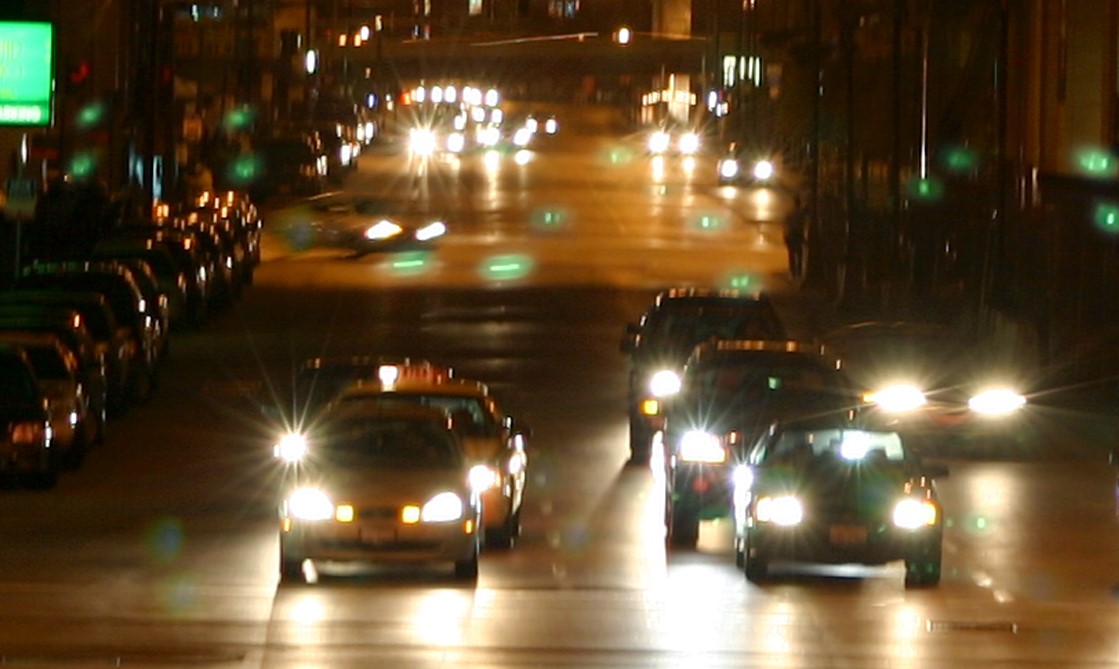- Free Consultation: 401-552-5000 Tap Here To Call Us
Do Headlights Seem Brighter Lately?

Driving the roads of Rhode Island at night and another car is coming toward you in the opposite direction, do you ever feel like you’re being blinded by the other vehicle’s headlights? Typically, we blame it on the other driver forgetting to turn off their high beams, but lately it seems to happen more often with just regular headlight use. After a blinding encounter like this, sometimes it can take more than 10 seconds for your eyes to readjust. As Providence personal injury lawyer David Tapalian knows, taking your eyes off the road for even a mere few seconds can be the difference between getting home safely and being involved in a serious night-time car accident.
You may find it reassuring to know that these seemingly brighter headlights are not just your imagination. There’s no denying the automotive industry has made tremendous safety improvements over the years, including improvements in lighting technology. Sometimes, however, these enhancements lead to an alternative problem, for instance the blinding glare of LED and high-intensity headlights. There are various reasons for these brighter lights causing a dangerous distraction to drivers, one being the prevalence of SUV’s and tall pickups, as well as small, short cars. The physical placement of headlights on a taller vehicle, such as an SUV, are going to be mounted higher and when the lights shine towards a shorter car, it can be directly into the driver’s eyes. Complaints of blinding glare from these headlights have increased greatly, according to the NHTSA. Being that over half of the nation’s motor vehicle accidents happen in the dark, as a personal injury law firm helping Rhode Island car accident victims, we feel it’s a crucial element for drivers to be aware of. Reasons for the Blinding Glare
Another reason automobile headlights may appear brighter is because of different colors used, even if the actual brightness is the same between the two. In the past, many head lights were halogens, which appeared to possess a more yellow hue. More frequently, we now see LED lights which appear whiter and may contain blue undertones. Even when the intensity of brightness is similar for both of them, our eyes perceive the latter as brighter. Halogens also have a decreased brightness measure of 1300 lumens compared to LEDs which are 1600 lumens. In addition, there are even brighter lights called high-intensity discharge/xenon, that measure 3000 lumens and the potential for laser headlights emitting 6400 lumens.
Headlights not only have different intensity levels, but they possess different measured temperatures. As lights increase in temperature, they begin to glow and get whiter which is perceived by the human eye as brighter. Beyond the physical lights themselves, different conditions can affect the way our eyes perceive them. For example, excessive sun and overuse can cause headlights to develop a haze that increases the chance of glare.
The Future of Headlights
In 2020, Ford issued a recall of their F-150 model due to a problem with headlight brightness. The switch that controlled the lights was unable to turn off the high beams when the low beams were in use. As a result, passing drivers were momentarily blinded as they attempted to pass or when they were directly in front of these vehicles. There are future developments that may affect how bright headlights appear moving forward and can hopefully prevent injury to those on the road at night. With the creation of adaptive driving beams, the hope is that there will be less glare for passing vehicles which will decrease the chance of car accidents. The new technology works by dimming the headlights when a motion sensor detects the movement of another vehicle nearby. Europe already has a similar system in place and allows you to leave the headlights on at all times. Not only will the chance of a Rhode Island auto accident be less likely due to decreased glare, but there will also be less distractions since you will no longer need to focus on turning them off and then on again. Additionally, since the headlights will never be truly off, only dimmer, you will always be able to see what is around you.
Ford has created the Glare-Free Highbeam which not only adjusts automatically to dim the headlight, but also has different settings that can adjust both the intensity and the physical angle of the light. The new system automatically changes the setting based on how fast the car is going, how much light is around, and how far away other vehicles are, among other variables.
One option for drivers who are frequently affected by glaring headlights is to purchase clear glasses which can block out the ultraviolet light that adds to the glare. You can also ensure that your front window is clean and free from dirt so light will not refract when it enters through your windshield.
A RI Personal Injury Lawyer Can Assist After a Headlight Glare Accident
If you were involved in a car accident in Rhode Island or Massachusetts due to defective headlights or the glare from another vehicle, contact Tapalian Law today. Attorney David Tapalian has decades of experience helping victims of all different types of car accidents across RI, MA, and FL. Each of our clients receive individualized attention and will be able to access our lawyers at any time of day, including nights and weekends. Email us to schedule a free consultation or call us at 401-552-5000 to speak with our legal team immediately. Our office works with victims of motorcycle, bike, and pedestrian accidents and offers easily-accessible office locations in Providence, Warwick, Seekonk, and Fort Lauderdale.







